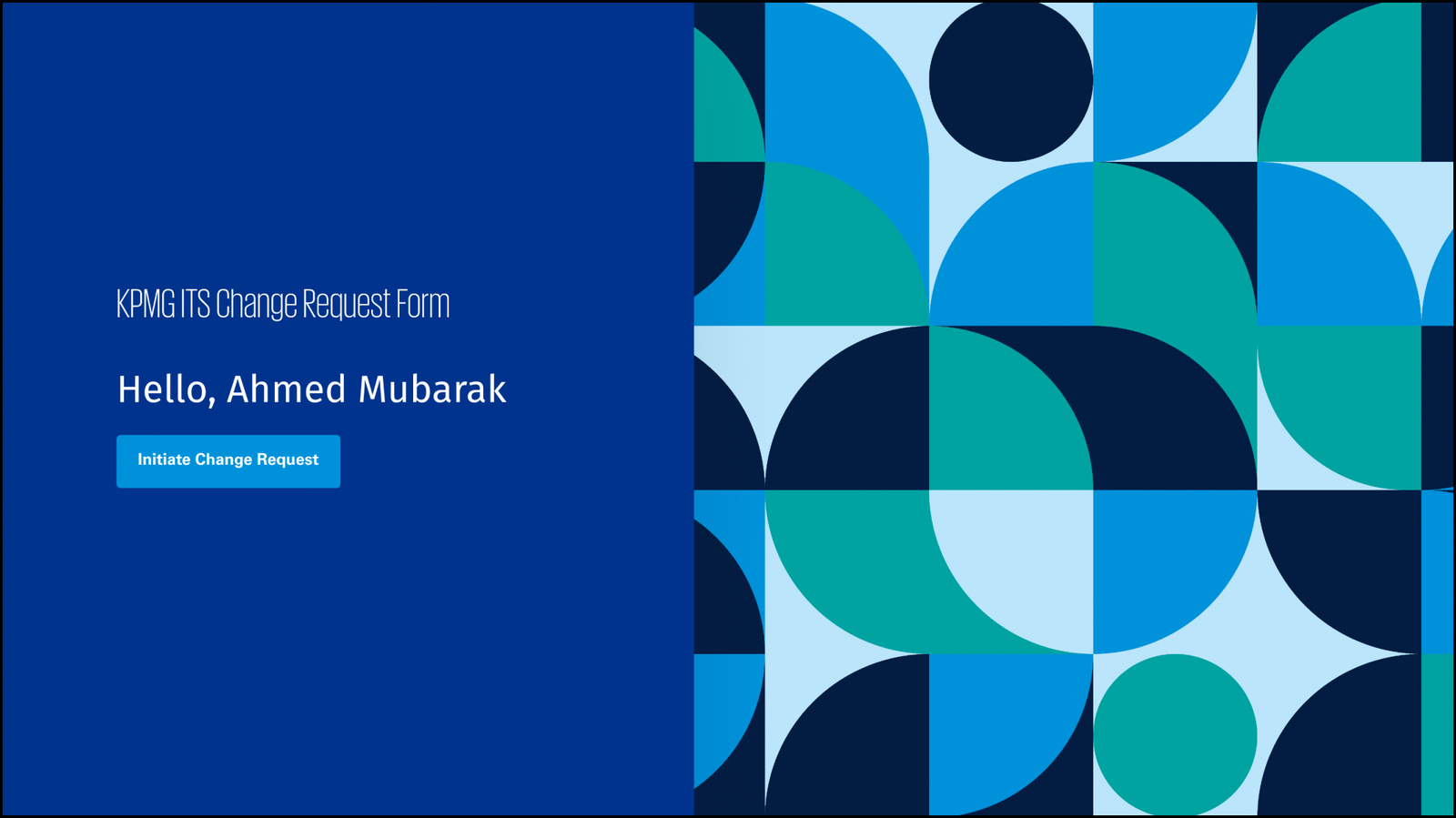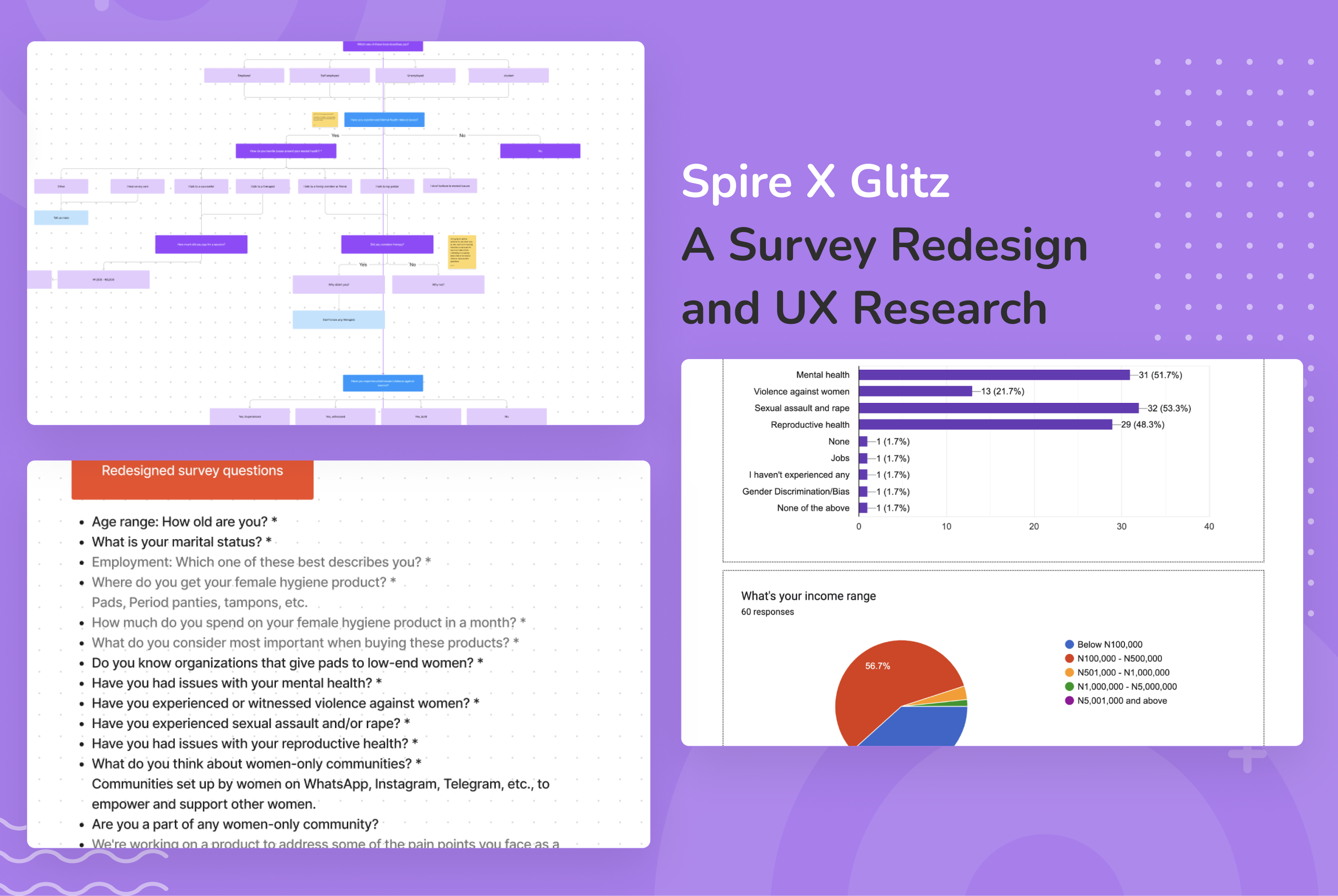
airvee
Overview:
Client: Glitz, a company aiming to build a one-stop lifestyle platform for women of all ages to find support.
Project Type: User Research and Survey Design
My Role: Lead UX Researcher at Spire.
Duration: 4 weeks
Background &Context:
Glitz, building a one-stop lifestyle platform for women, approached Spire with a pre-made survey containing significant design flaws. The original survey was filled with biased questions like 'How much would you be willing to donate?' which assumed respondents' willingness to donate. The survey lacked user research foundation, relying instead on secondary information and personal assumptions about women's experiences. This compromised its ability to gather meaningful insights about women's needs across mental health, reproductive health, and safety concerns.
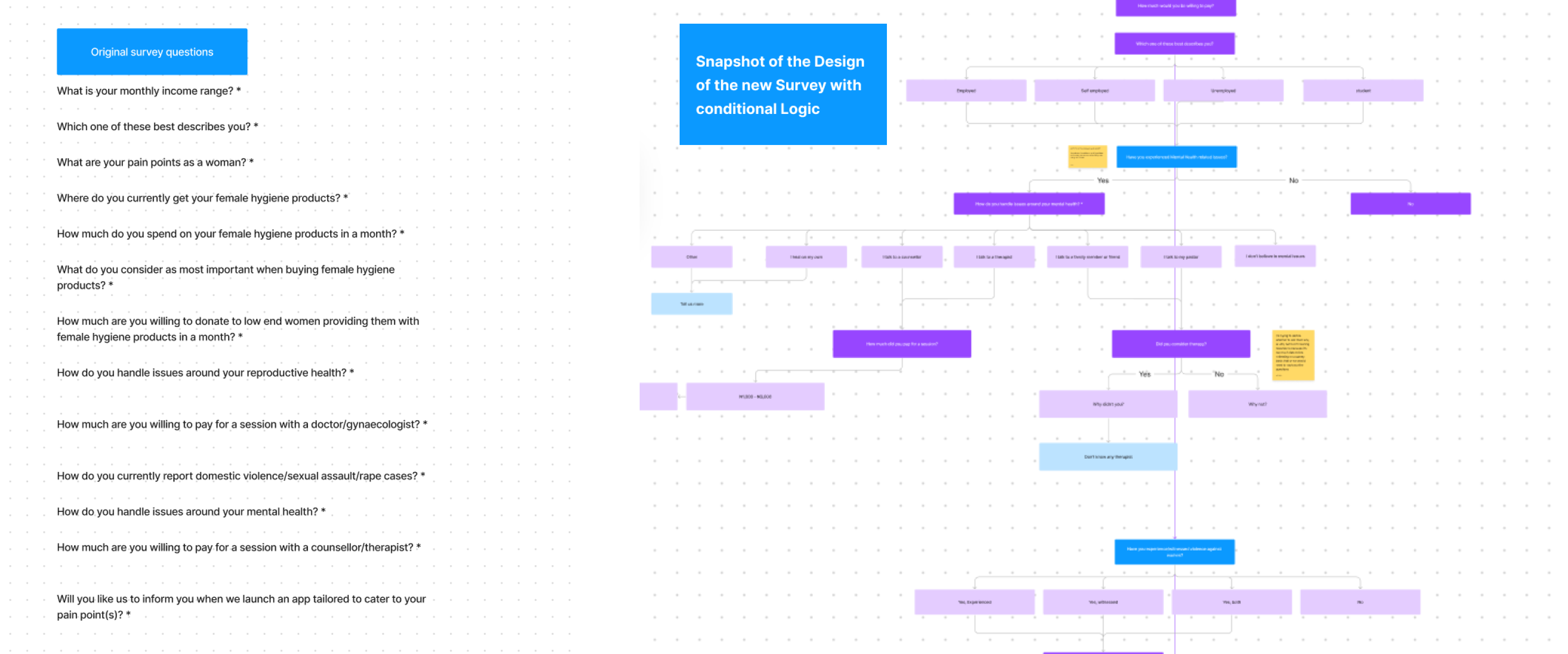
Objective:
To transform a biased survey into a comprehensive research initiative that would provide meaningful insights for Glitz's women's lifestyle platform development. The goal was to validate assumptions and gather accurate data about women's experiences with health, safety, and support systems
Quick Overview
As Lead UX Researcher at Spire, I transformed a biased, assumption-laden survey into a comprehensive research initiative that delivered validated insights for Glitz's women's lifestyle platform. Through conducting 6 in-depth interviews from 18 selected participants, I uncovered critical user insights that challenged initial assumptions about therapy, women's communities, and support systems. This led to a complete survey redesign with conditional logic that exceeded the target response rate (111 vs 100) while ensuring data quality and relevance for product decisions.
The research process established:
A reusable framework for researching sensitive topics
Data-driven survey options based on real user language
Validation of actual user needs versus assumed solutions
Clear direction for product development based on authentic user insights
Goals & Methodology:
My Approach
I proposed a comprehensive research process to better understand user needs and validate assumptions before distributing the survey.
Research Planning
Discovery Call: I held a call with the client to fully understand the goals of their survey. From this, I learned that they were hoping to build a lifestyle platform to support women with issues ranging from hygiene products to mental and reproductive health.
Redefining the Purpose: Rather than using a survey to make decisions based on assumptions, I suggested we conduct user interviews to hear directly from women about their experiences, and then use those findings to refine the survey.
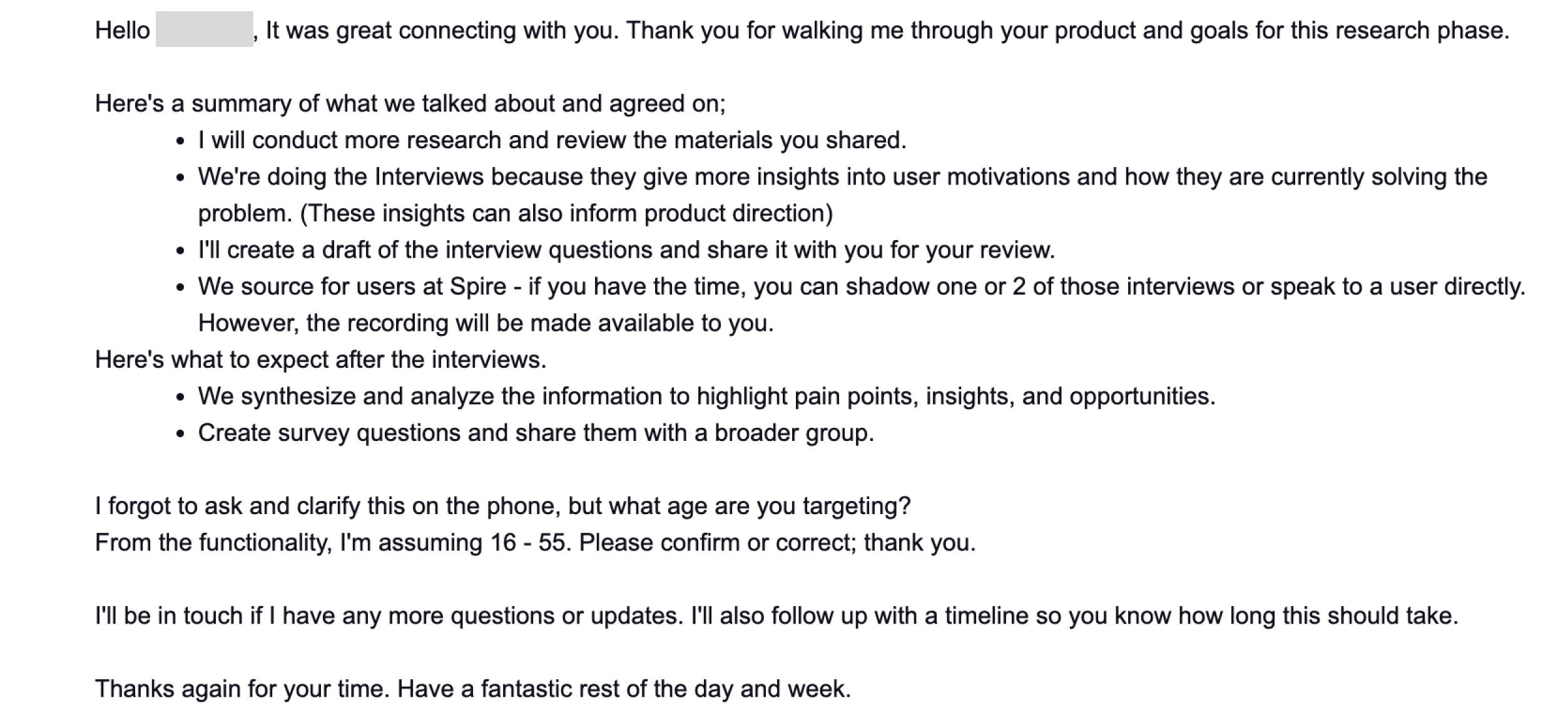
User Interviews
Screener And interview Question Design:
After agreeing on the goal of the design, I created a screener to recruit participants from Spire's community, ensuring they fit the demographic and experience criteria we needed. I then created the interview questions and shared that with the client to keep them in the loop and ensure that they were satisfied with the data that we were collecting also seek feedback incase there were topics they also wanted to add or didn't think we relevant.
Screener questions

Interview Questions
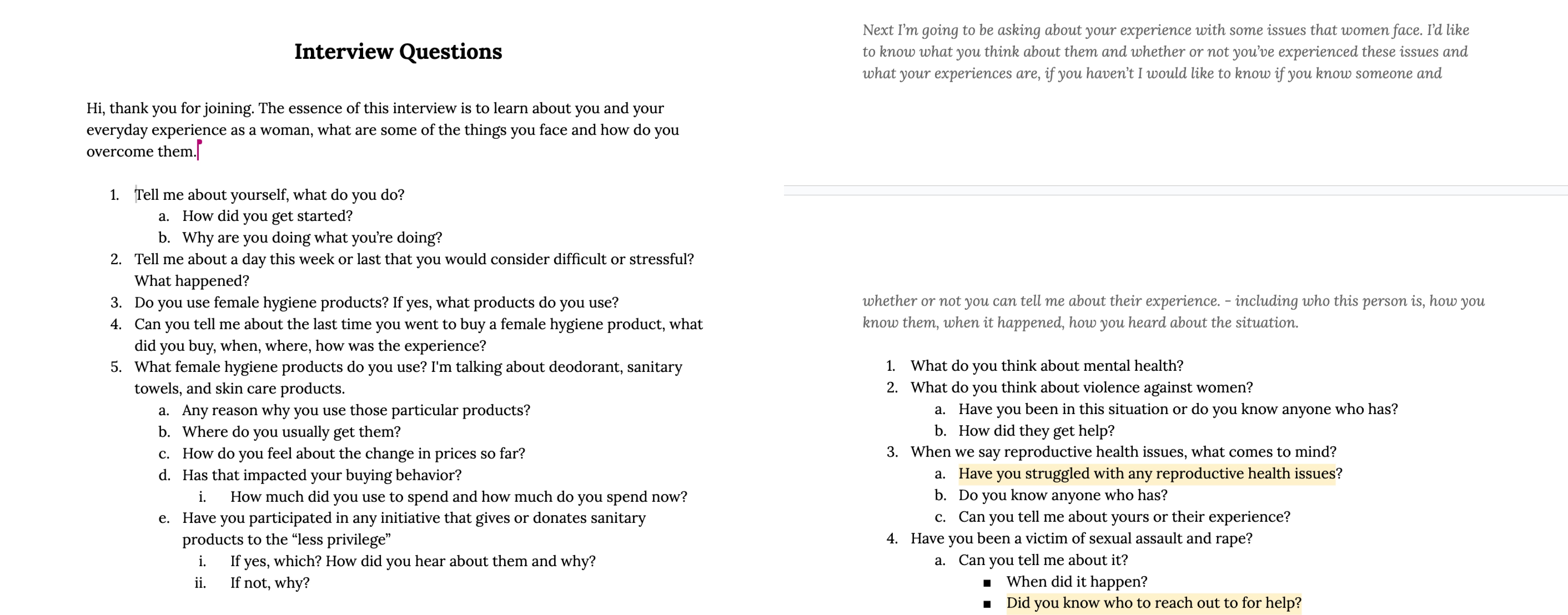
Shortlisting & Interview Process:
We selected 18 women from 60 respondents, who signified that they would be willing to talk to us about their experience ultimately conducting six in-depth interviews. These interviews provided us with insights and data to back up claims about the pain points, and behavioral patterns of our target audience.
Constraints and How They Were Addressed
While conducting the research, we faced several constraints. Ideally, we would have spoken to women across all age ranges and core issues (mental and reproductive health, sexual assault, and violence). However, due to time and budget limitations, we focused on women who had experienced the most pressing issues. We were also unable to reach participants in the 41-45 age range, which limited our ability to gather comprehensive insights across all demographics.
To overcome this, I decided to prioritize speaking to women who had the most relevant experiences across the available age groups. This allowed us to gather meaningful insights and identify key patterns, while still working within the resource constraints. Although we were unable to cover all age ranges, this approach provided a solid foundation for future research and helped to inform the client's next steps.
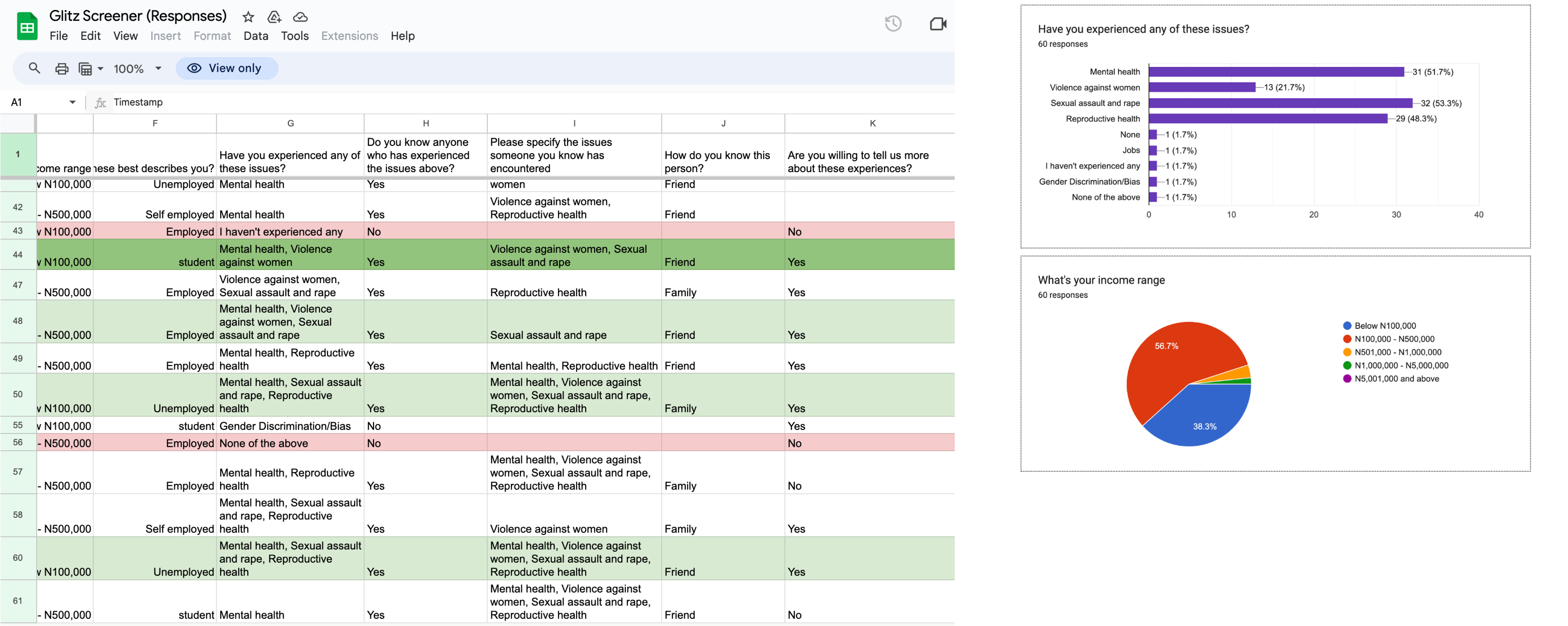
Insights from the interview
The insights below provided valuable validation that the issues Glitz aimed to address were indeed problems for their target audience.
However, I advised that more interviews would be needed to fully understand the breadth and depth of these issues across different demographics.
Key Insight: Therapy Wasn't Considered a Solution
One of the most significant insights we uncovered through the interviews was that many women did not consider therapy as an option when dealing with issues like sexual assault or trauma. In fact, most women had not sought professional help at all, relying instead on personal support systems like family or friends.
This insight was especially important because, in the original survey, the assumption was made that therapy was a relevant solution, and women were asked how much they would be willing to pay for it. Through the interviews, we realized that therapy was not top of mind for most women and that pushing therapy as a solution in the survey might not align with their actual needs or behavior.
By doing the interviews, we decided that therapy may not be the best solution to focus on for this audience. Instead, we shifted our approach to explore alternative support systems and resources that better reflected the users' actual behavior and preferences.
Other important themes that emerged:
Early Experiences of Assault: Many of the women interviewed mentioned that assaults happened at a young age. However, most of them did not speak to anyone about these experiences, or they only confided in someone they trusted, like a parent or close friend. This insight highlighted a lack of support systems for women experiencing trauma at a young age.
Minimal Engagement with Women-Only Communities: Most of the interviewees were not actively involved in women-only communities. Some mentioned that they had joined women-only spaces related to their careers, while others didn’t see the need for such communities. This insight suggested that the concept of women-only spaces wasn’t as widely adopted or needed as initially assumed.
Limited Use of Women-Only Apps: Only a few women reported using women-only apps, with period tracking apps being the most common. This insight indicated a potential gap in the market for other types of women-specific apps, or it could point to a lack of awareness about their existence.
Lack of Awareness of Support Organizations: Many women did not know about organizations that they could reach out to for help regarding issues such as sexual assault or reproductive health. This insight showed a potential opportunity for better awareness and education about available resources for women.
Survey Redesign:
Here's the Link to the redesigned survey.
Based on the interview findings, I completely restructured the survey to remove biases and leading questions. I decided that it was best to also create a conditional logic that only showed more questions based on the user's answers.
My assumption was that this would ensure we collected more clean and relevant data.
i also updated the dropdown options to match with words and phrases i heard from the participants i interviewed making it more relatable, realistic and data driven.
Some key changes included:
Replacing assumptive questions like “How do you handle reproductive health issues?” with conditional logic to first ask if they had these experiences.
Asking more neutral and relevant questions like “Which of these best describes your employment status?” followed by a conditional question about income only for those who were employed.
Adding more questions: for instance; I added a question about the age of participants when they were first abused, which was a recurring theme during the interviews but absent from the original survey.
Conditional Logic: The survey was redesigned with conditional logic to ask more relevant follow-up questions based on responses, ensuring participants weren’t forced to answer questions irrelevant to their experiences.
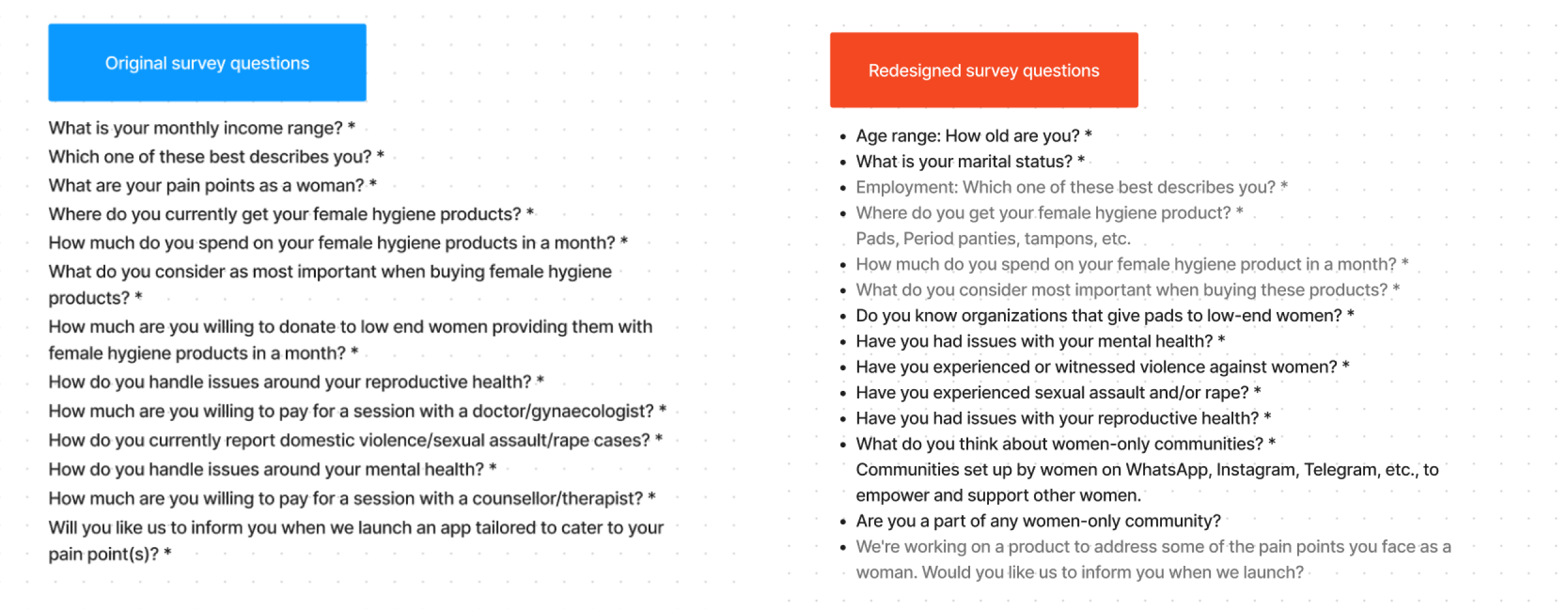
Modifying the current survey

Outcome
The client received 111 completed survey responses (exceeding their target of 100), with much more accurate and relevant data than the original survey would have provided.
The insights gathered allowed the client to make more informed decisions about their product, focusing on areas where users actually needed support.
The client was pleased with the research process and the quality of the new survey, and they appreciated having data to back up their platform’s direction.
Challenge
Males filling out the form: Despite targeting female participants, some men also responded to the screener, which was unexpected but managed by screening them out.
